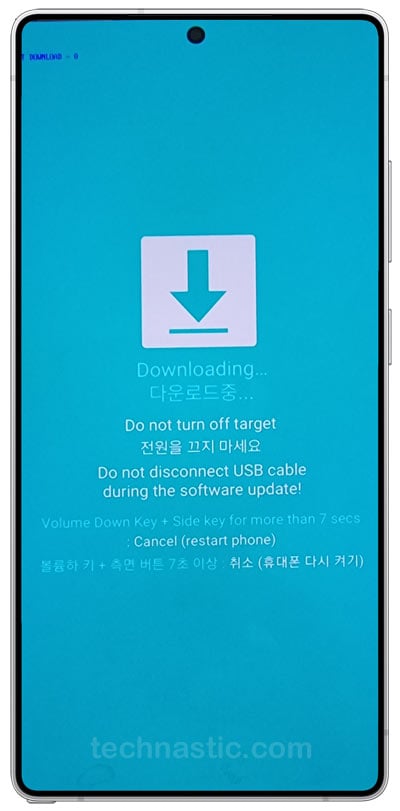Samsung released the Android 15-based One UI 7 Beta in 6 phases before rolling out the final version (XXU4BYD9). Suppose you sideloaded OTAs after OTA to get to BYD9. In that case, it might be time for a clean installation of the Android 15 firmware on your Samsung Galaxy device via Odin to ensure you get future OTA updates. This tutorial will describe the steps to flash the latest One UI 7 firmware on eligible Samsung phones and tablets.
Important Notes:
- Backup your data – the process may wipe your phone.
- Proceed at your own risk – flashing firmware incorrectly can brick your device.
- This guide is for official firmware.
- Make sure your device is charged to at least 60%.
Requirements:
- Samsung Galaxy phone eligible for One UI 7 (Android 15)
- A Windows PC
- Samsung USB Drivers are installed on your PC
- Odin Tool – official Samsung firmware flashing tool
- Official One UI 7 Firmware for your specific model
- USB cable
Downloading the One UI 7 Firmware
Installing One UI 7 (Android 15) firmware on a Samsung Galaxy device involves several steps. First, you’ll need a Samsung firmware download tool to grab the latest software available for your device. In this tutorial, we’ll use the Bifrost firmware downloader, a cross-platform tool for Windows, macOS, Linux, and Android.
If you don’t know if your Samsung Galaxy device will receive the official One UI 7 (Android 15) update, you should check out Samsung’s One UI 7 upgrade schedule. Let’s see how to use Bifrost to fetch Samsung’s official firmware directly from their servers.
- Download Bifrost from the GitHub repository.
- Extract the downloaded ZIP and open the folder.
- Open the ‘bin‘ folder, look for Bifrost.exe, and double-click the executable to launch the program.
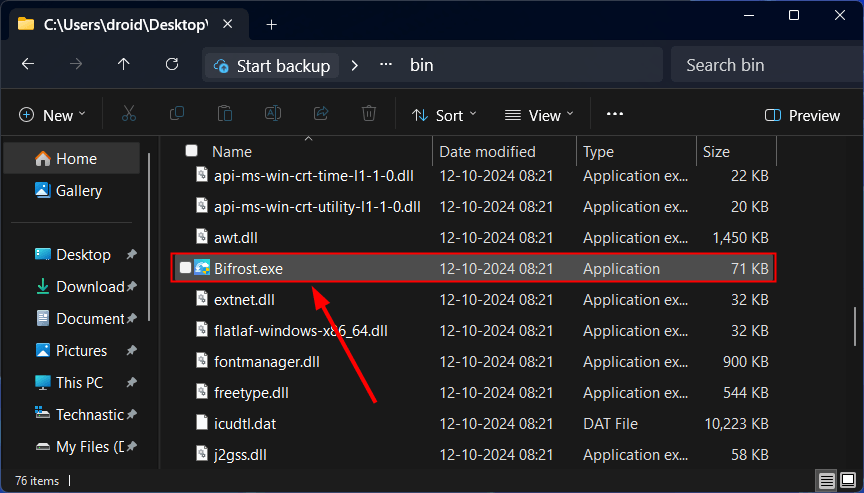
- If you get a false positive warning while launching Bifrost, try this solution to install apps from unknown publishers on Windows.
- Navigate to Settings > About phone to find its model, IMEI, and serial number. You’ll also need the CSC of your Samsung Galaxy device.
- Populate the Model, Region (CSC), and IMEI fields with relevant information and click the Check for Updates button.
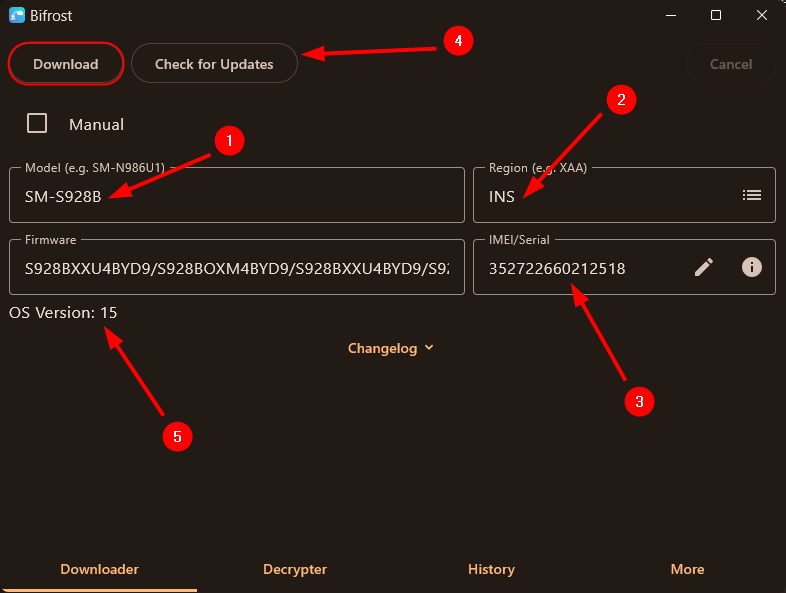
- Bifrost will fetch the latest firmware version available for your device. Click Changelog to get more information about the software update.
- If Bifrost displays “OS Version: 15“, the One UI 7 update is available for your Samsung device.
- Finally, click the Download button in Bifrost to initiate the firmware download. When prompted, create a new folder named ‘Firmware’ and select it for download location.
- Depending on your network speed, the firmware download might take a while to finish.

- When the firmware is downloaded, Bifrost will perform a CRC check to verify its integrity.
- Extract the downloaded ZIP file to get the AP, BL, CP, and CSC binaries with a .md5 extension.

Installing the One UI 7 Firmware using Samsung Odin
Now that you have the Samsung One UI 7 firmware, you’ll need to flash it using the Odin tool.
- Download the latest Samsung Odin and extract the ZIP.
- Boot your Samsung device into Download Mode.
- Do not disconnect the USB cable and double-click Odin3 v3.14.1.exe to launch the tool.
- The ID:COM port in Odin will turn blue when it detects your device.
- Now, add the firmware files to the respective fields in Odin.
- BL ➜ BL_*.tar.md5
- AP ➜ AP_*.tar.md5
- CP ➜ CP_*.tar.md5
- CSC ➜ CSC_*.tar.md5 (choose HOME_CSC if you want to keep data)
- Finally, click the Start button to initiate firmware flashing.
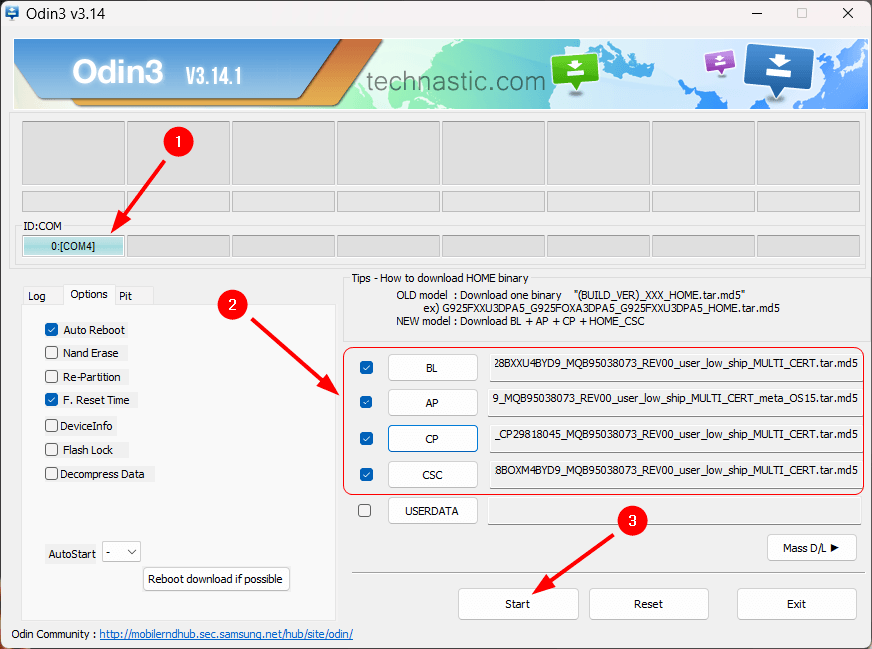
- Odin will start installing the One UI 7 firmware files to the connected Samsung Galaxy device.
- Odin will say PASS in green, and your device will reboot into One UI 7 (Android 15).

That’s it! Now, go through the welcome setup on your Samsung device and enjoy the amazing new One UI 7.
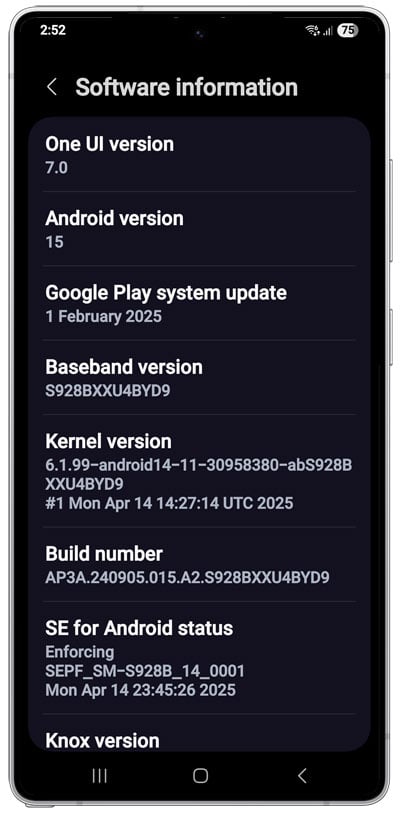
Do not forget to check out our list of all new features and changes in One UI 7 to make the most of this major software upgrade.
